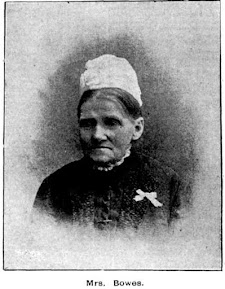An Architectural Dynasty that surrounds us
Today's blog pays tribute to
a Master of Architecture whose name has been forgotten somewhat in the pages of
time. Many of his creations still stand proudly.
JOHN FRANCIS HENNESSY (SNR)
John was born on the 21st of April 1853 in Leeds England, the son of Bryan Hennessy and his wife, Ellen who had
moved to Leeds from Cork in Ireland. The family were relatively well off as
they could boast a domestic servant in a subsequent census. After passing the
Oxford senior local examination in 1868, John was articulated to William Perkin
& Son, architects and surveyors of Leeds.
He completed his articles in
1875 and won a three-year studentship at the Royal Institute of British
Architects which allowed him to study in London under the tutorage of many
distinguished architects of the day. William Burges, a leading figure in Gothic
revival, was obviously a strong influence as that style became Hennessy's
trademark. After six month's study in Spain, he worked in leading architectural
offices in New York and Boston, USA, with a further two years in Los Angeles
before arriving in Sydney in 1880.
John's ability was soon
recognised and he was appointed assistant city architect. His father, elder
brother (who was also an architect), and one of his sisters soon joined him in
Sydney. After working four years for the Sydney City Council, in 1884 he went
into partnership with Joseph Sherrin, an Australian born Catholic architect,
and soon established a thriving business. That same year he married Matilda
Silk, and they would have four children before her untimely death in 1898 from a
domestic accident.
One of Sherrin and
Hennessy's early projects was the Gothic inspired St Patrick’s Seminary at
Manly for which the company received much praise. They had a flourishing
relationship with the Catholic Church and designed many colleges and churches
in Sydney and regional areas. Among their numerous commercial premises were
Hordern Bros' drapery store (1886) and the Tattersall's Club (1892), commercial
buildings/hotels such as Pinnacle House (1888) and the Forbes Hotel (1901) as
well as many suburban premises.
John built a home for his
family in Belmore Street Burwood and designed the council chambers in 1887.
Hennessy was an alderman on the Burwood council from 1890 to 1895 and Mayor
from 1892-1893. From 1884 to 1888 he was
an instructor in architecture at Sydney Technical College and President of the
Institute of Architects of NSW from 1911-1912.
His only son John, known
more commonly as Jack, followed in his father's footsteps and became an
architect learning his craft at the Sydney Technical College and then undertook
a four-year course in Architecture at the Pennsylvania University. After
completion and a short tour of Europe he returned to Sydney in 1911. The
following year Sherrin retired at the age of sixty-five and Jack joined the
firm with the name changing to Hennessy & Hennessy after a short stint with another
firm. The suburb of Daceyville which John (snr) had commenced with St John
Sulman in 1912 was finalised during their partnership. The suburb was proposed
by and named after John Rowland Dacey a State parliamentarian for the area from
1895-1912 who wanted the creation of a garden suburb providing low-cost housing
for working class people based upon Letchworth in England.
The most prestigious project
the father and son team worked on was the completion of William Wardell's plans
for St Mary's Cathedral Sydney, for which they designed the crypt.
Due to his importance in the
development of church architecture in Australia, John (Snr) was appointed
Knight of the Order of St Sylvester by Pope Benedict XV in 1920.
John (Snr) stepped down from
the Company in 1924 citing ill health. He died of heart disease at his Burwood
home on the 1st of November that year.
He was survived by three
daughters and his son who carried on the firm Hennessy, Hennessy and Co. The company
worked on more contracts in other states of Australia, mainly in Queensland in the
early years. Jack Hennessy died in 1955 and is buried in the "new"
Catholic area in Rookwood close to the Catholic office.
John Hennessy (Snr) is
buried in the old Catholic area just behind the St. Michael the Archangel
Chapel under a large Celtic cross. The monument does not carry any names of the family, but the large site
contains his father brother two sisters, wife and their children who died
young.
Hennessy's legacy lives on
in the many Gothic inspired buildings in Sydney and beyond which he designed
with Joseph Sherrin or his son Jack. Revisit them and give thanks to his eye for
grandeur.
For today's blog I have
referenced the Australian Dictionary of Biography article written by Ron Howard
in 1983, and online in 2006; ancestry.com and the attachment "Australia's
First International Architect - Jack F. Hennessy Junior by John W. East,
Wikipedia, the Dictionary of Sydney, the Catholic Press report on the death of
J.F. Hennessy dated the 6th of November 1924 amongst other google searches.
If you have any further
information to add regarding the subject of today's blog, please add them to the
comments area below or at the group facebook page found under
rookwoodcemeterydiscoveries
or simply send me a personal
message at
I’d really like to hear your
stories or inside scoop!
Until next week.











A great post Loraine, more interesting when you have actually been in some of his buildings ..My first visit to the Tattersall’s Club was 1967 to meet my future father in law..
ReplyDeleteIt's always a thrill to get up close and personal with the buildings that people who call Rookwood "home" have been associated with
ReplyDelete